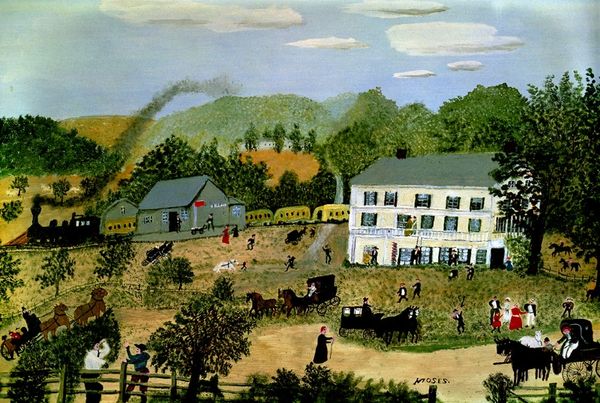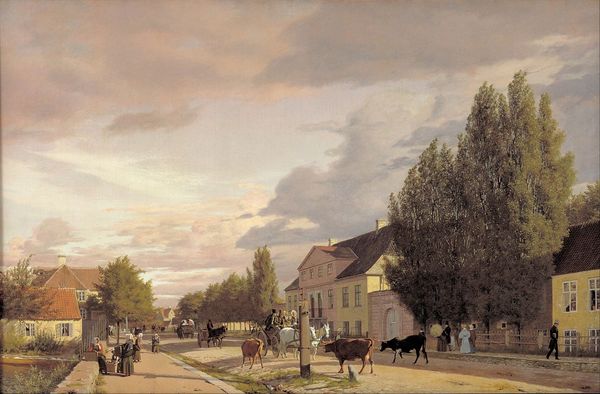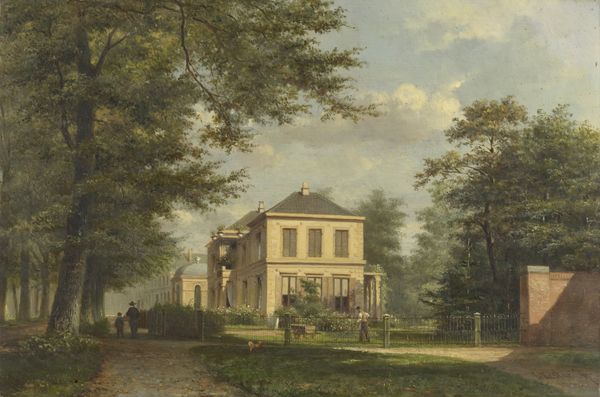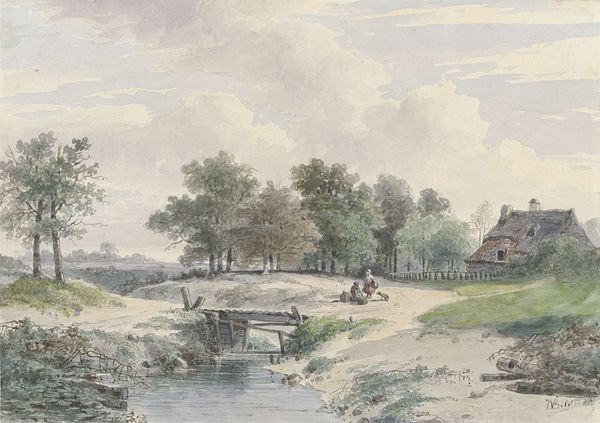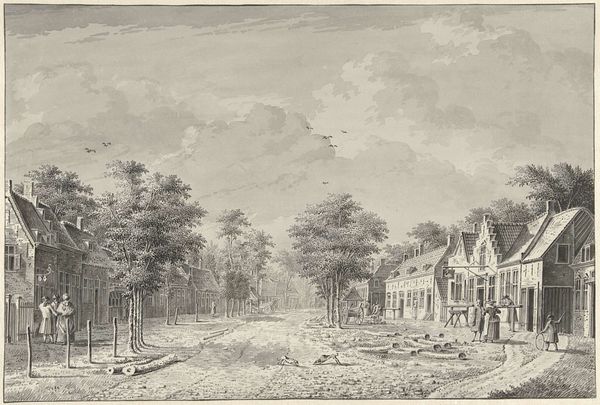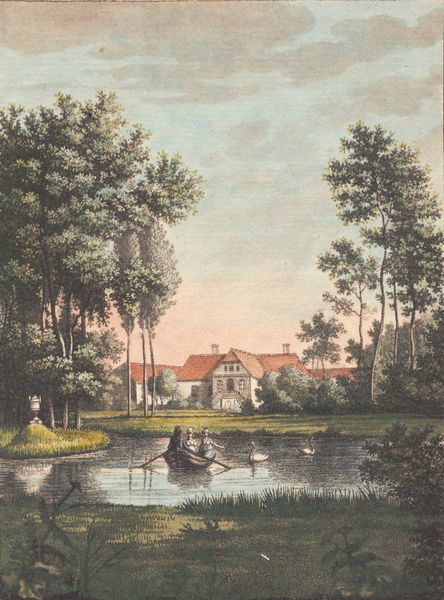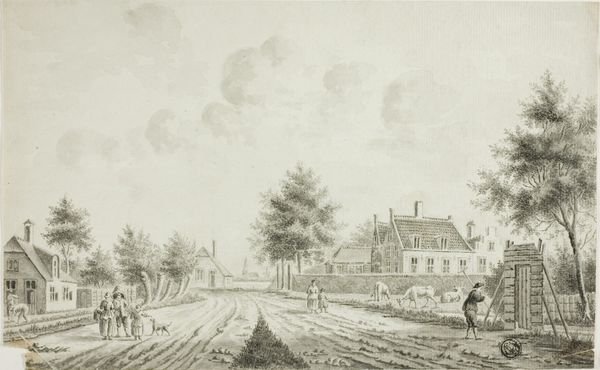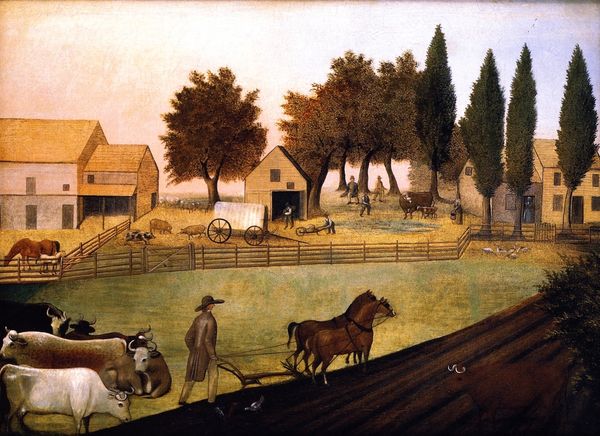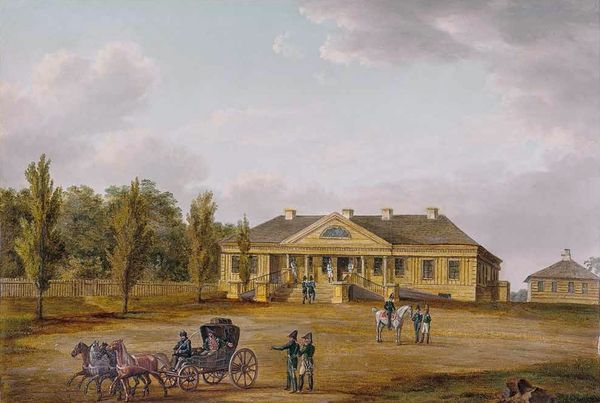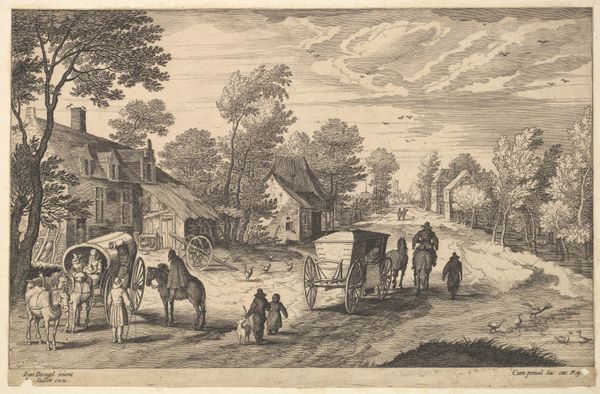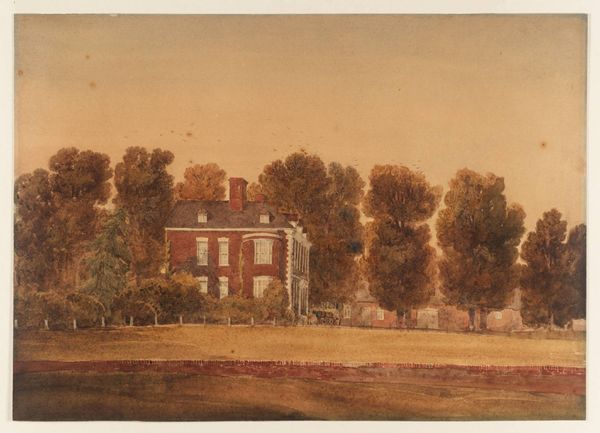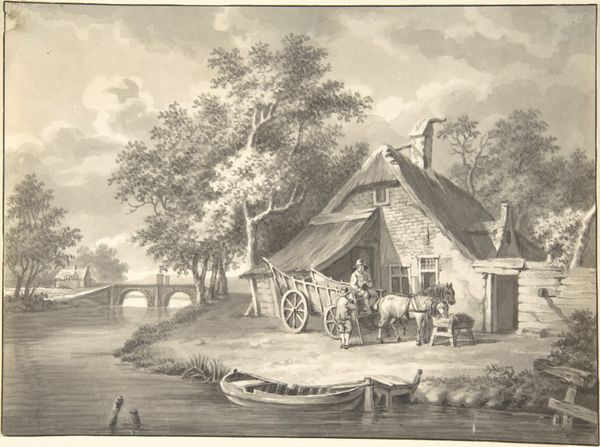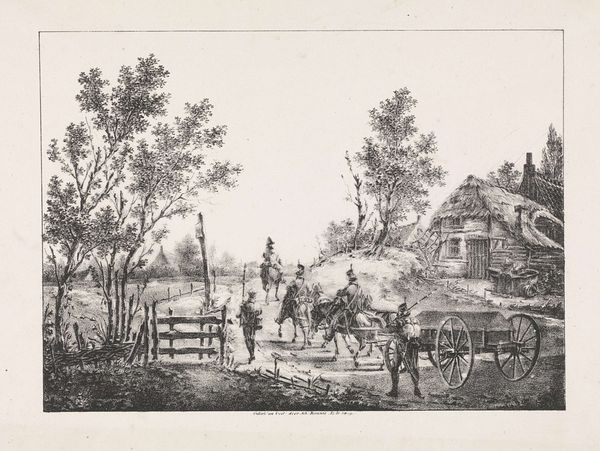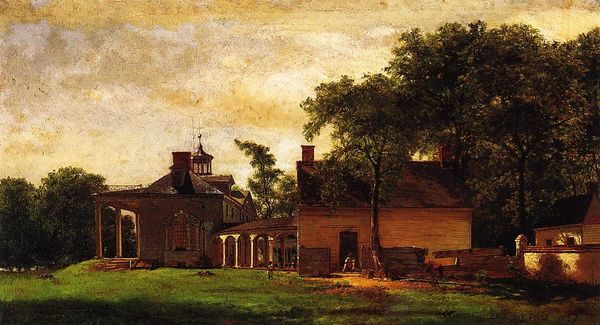
Copyright: Public domain
Editor: This is "A Home on the Mississippi," a lithograph etching by Currier and Ives from 1871. I’m immediately struck by how picturesque and balanced the composition is. What visual elements stand out to you, and how do they work together? Curator: Notice the use of the rule of thirds, with the river on the left occupying roughly a third of the composition. This leads the eye towards the house, centrally placed in the right two-thirds, drawing us from the natural setting into a carefully structured, almost idealized vision of domesticity. Also observe how light and shadow are not merely representational. See how they articulate form and create tonal balance? Editor: Yes, there's a strong contrast that defines shapes and draws the eye. So it’s less about realism and more about the careful interplay of elements? Curator: Precisely. The strong diagonals of the road leading to the house enhance depth, yes, but primarily serve to pull our attention to the focal point. Think about the visual rhetoric at play; the artist is orchestrating a specific viewing experience. Consider, too, how the textures are created using distinct, visible marks that become an important visual element in themselves. Editor: That's fascinating. It really shifts my perception of what I thought was just a straightforward landscape. It’s all very deliberate and constructed, down to the texture of the lithograph itself. Curator: Indeed. By understanding the interplay of form, line, texture, and composition, we can decipher the underlying principles that make the image so visually appealing, and, therefore, so effective as a statement. Editor: Thanks, that really helps me see beyond the surface!
Comments
No comments
Be the first to comment and join the conversation on the ultimate creative platform.
